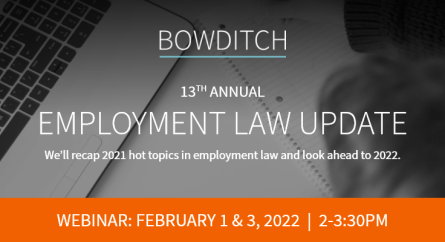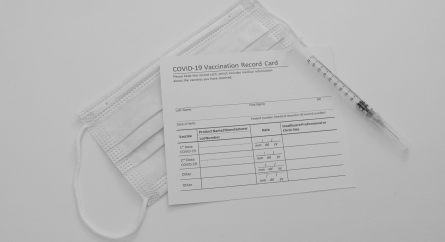New COVID-19 Paid Leave Laws – Here’s What You Need To Know
On Wednesday, the President signed a bill into law that gives many employees affected by COVID-19 guaranteed paid leave. This new law creates two new types of leave: paid COVID-19-related sick leave via the Emergency Paid Sick Leave Act and partially-paid “public health emergency” FMLA leave via the Emergency Family and Medical Leave Expansion Act (collectively, the “Acts”).
These Acts will take effect on or before April 2, 2020. Accordingly, covered employers should immediately prepare to administer these new categories of paid leave. Here are some important details about the Acts that you should know:
FIRST THINGS FIRST: SOME IMPORTANT EXCLUSIONS FOR CERTAIN EMPLOYERS
Broadly, the Acts apply to both private and public sector employers. However, there are some important exclusions that apply. For example:
- Private employers with 500 or more employees are excluded from the Acts. The Acts do not require these large employers to provide their employees with COVID-19-related sick leave and “public health emergency” FMLA leave.
- There are less generous carve-outs for small businesses with fewer than 50 employees. Specifically, the Department of Labor (“DOL”) is allowed to exempt such businesses from the Acts’ requirements to provide “public health emergency” FMLA leave and paid sick leave for the purpose of caring for a child with a closed school or care provider, but only if imposing those requirements would “jeopardize the viability of the business as a going concern.” We expect that the DOL will issue regulations regarding these carve-outs in the near future.
- Significantly, employers with “health care provider” or “emergency responder” employees can elect not to provide those employees with COVID-19-related paid sick leave and “public health emergency” FMLA leave. We expect that the DOL will address and perhaps further clarify this unique exception through new regulations in the near future.
THE EMERGENCY FAMILY AND MEDICAL LEAVE EXPANSION ACT
The Emergency Family and Medical Leave Expansion Act amends the Family and Medical Leave Act by adding a new, unique category of FMLA leave called “public health emergency” leave. Eligible employees may receive up to 12 weeks of this leave in a given 12-month period.
An eligible employee can qualify for this leave if he or she is unable to work (or telework) due to a need for leave to care for a “son or daughter” under 18 years old if: (i) the son or daughter’s school or place of care has been closed due to a “public health emergency,” or (ii) the son or daughter’s childcare provider is unavailable due to a “public health emergency.”
“Public health emergency” is defined as “an emergency with respect to COVID-10 declared by a Federal, State, or local authority.” “Son or daughter” is defined broadly to mean a biological, adopted, or foster child, a stepchild, a legal ward, or a child of a person standing in loco parentis.
This new “public health emergency” FMLA leave differs from traditional FMLA leave in several respects. To be eligible for “public health emergency” FMLA leave, an employee need only be employed for at least 30 calendar days, and there is no hours-of-service requirement. In addition, unless the above-mentioned small business carve-out applies, private employers with fewer than 50 employees are not excluded from the requirement to provide this leave.
Further, unlike traditional FMLA leave, “public health emergency” leave is a partially-paid leave. The first 10 days of an employee’s leave can be unpaid, although as a practical matter employees may be entitled to sick leave under the Emergency Paid Sick Leave Act or elect to use other available paid vacation, personal, medical or sick leave during that time. However, after that initial 10 days, the employer must pay the employee for each day of leave. Generally, the paid leave must compensate the employee for the number of hours he or she would otherwise be normally scheduled to work, at a rate of at least two-thirds of the employee’s regular rate of pay under the FLSA. The paid leave cannot exceed $200 per day or $10,000 in the aggregate.
Additionally, the Act creates a new exception to the normal FMLA job restoration requirement. Specifically, an employer with fewer than 25 employees is not required to restore an employee to his or her position or an equivalent position upon return from leave if: (1) the employee takes “public health emergency” leave; (2) the position held by the employee when the leave began no longer exists due to economic conditions or other changes in operating conditions of the employer that (i) affect employment and (ii) are caused by a “public health emergency” during the leave; (3) the employer makes reasonable efforts to restore the employee to an equivalent position; and (4) if those efforts fail, the employer makes reasonable efforts during a one-year period to contact the employee if an equivalent position becomes available.
Employers should be aware that the Emergency Family and Medical Leave Expansion Act does not enlarge the total FMLA leave time available to employees. Employees are still only entitled to 12 total workweeks of “non-military-caregiver” FMLA leave (including “public health emergency” leave, “serious health condition”-related leave, and leave for the birth and care of a newborn child, among other categories) and 26 total workweeks of combined military caregiver and “non-military-caregiver” FMLA leave in a given 12-month period.
Accordingly, as noted above, eligible employees can potentially take up to 12 weeks of “public health emergency” leave in a given 12-month period. However, if an employee first takes FMLA leave for another reason (or reasons), the employee may be entitled to less than 12 weeks of “public health emergency” leave. For example, if an employee first takes three weeks of FMLA leave to care for a newborn child, that employee will only be entitled to take nine weeks—at most—of “public health emergency” FMLA leave in the applicable 12-month period.
Employees will not be able to take “public health emergency” leave under this Act after December 31, 2020.
THE EMERGENCY PAID SICK LEAVE ACT
The Emergency Paid Sick Leave Act requires employers to provide paid sick time to employees who are unable to work (or telework) because they are:
- subject to a Federal, State, or local quarantine or isolation order related to COVID-19 or are caring for an individual subject to such an order;
- advised by a health care provider to self-quarantine due to concerns related to COVID-19 or are caring for an individual who has been so advised;
- experiencing symptoms of COVID-19 and seeking a medical diagnosis;
- caring for a “son or daughter” if (i) the son or daughter’s school or place of care has been closed due to COVID-19 precautions, or (ii) the son or daughter’s childcare provider is unavailable due to COVID-19 precautions (the Act adopts the FMLA’s broad definition of “son or daughter” referenced above); or
- experiencing any other “substantially similar condition” specified by the Secretary of HHS in consultation with the Secretary of the Treasury and the Secretary of Labor.
Under this Act, full-time employees are entitled to 80 hours (i.e., 10 days) of paid sick time. In contrast, the paid sick time hours available to part-time employees must be determined on an individual basis: a part-time employee will be entitled to however many hours the employee works, on average, over a two-week period.
The Act requires employers to make this paid sick time available for immediate use by employees, regardless of how long they have been employed.
This Act imposes important notice requirements on employers. All employers must post a notice of the requirements of this Act in a conspicuous places on the premises where notices to employees are customarily kept. The notice must be prepared or approved by the Secretary of Labor. The DOL is required to publish a model notice that meets these requirements by March 25, 2020.
The Act also allows employers to require employees to provide reasonable notice of their status during sick leave. Specifically, after the first workday (or portion thereof) that an employee receives paid sick time under the Act, an employer may require the employee to follow reasonable notice procedures in order to continue receiving paid sick time.
The DOL is required to issue guidelines on or before April 2, 2020 to assist employers in calculating the amount of paid sick time due to employees under this Act. We will provide a supplemental update regarding calculation of sick time once these guidelines are released. However, the basic principles for paid sick time calculation provided in the statute are as follows:
- Generally, paid sick time will be calculated based on the employee’s “required compensation” and the number of hours the employee would otherwise be normally scheduled to work. However, the definition of “required compensation” changes depending on the employee’s reason for taking leave.
- For employees who take leave to care for themselves or because they are subject to a quarantine or isolation order (i.e., under the first half of prongs (1) and (2) above, and prong (3)), “required compensation” is defined as the greater of (i) the employee’s regular rate under the FLSA: (ii) the federal minimum wage; and (iii) the applicable state or local minimum wage.
- Conversely, for employees who take leave to care for others (i.e., under the second half of prongs (1) and (2), and prongs (4) and (5)), “required compensation” is defined as two-thirds of the greater of (i) the employee’s regular rate; (ii) the federal minimum wage; and (iii) the applicable state or local minimum wage.
- In addition, the maximum paid sick time compensation for employees who take leave to care for themselves or are personally subject to a quarantine or isolation order is $511 per day and $5,110 in the aggregate, while for employees who take leave to care for others, it is $200 per day and $2,000 in the aggregate.
Finally, the Act provides that nothing in it shall be construed to in any way diminish the rights or benefits that an employee is entitled to under any other federal, state, or local law, collective bargaining agreement, or existing employer policy.
The Emergency Paid Sick Leave Act will expire on December 31, 2020. Employees cannot take paid sick leave under the Act after that date, and paid sick time under the Act will not carry over from one year to the next.
CLIENT TIP
We suggest that employers review these new laws and their current leave policies to assess whether further action is required, as many employers will need to be prepared to administer these new forms of leave in the near or immediate future. Employers should also look out for new regulations from the Department of Labor in the near future. We will continue to keep you apprised of new developments regarding these new forms of paid leave.
Categorized: Employment
Tagged In: coronavirus, COVID-19, paid leave









